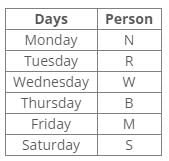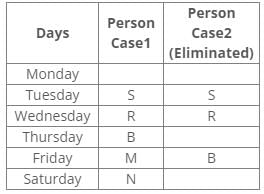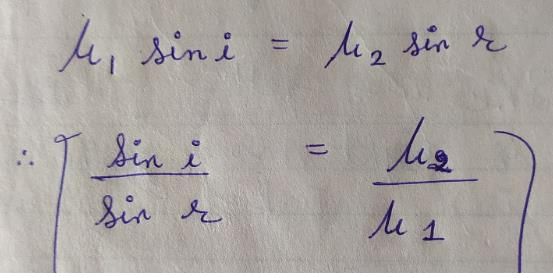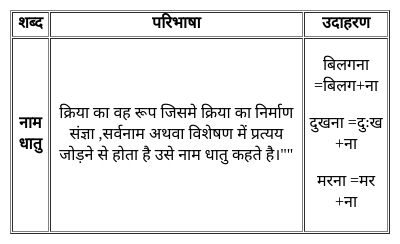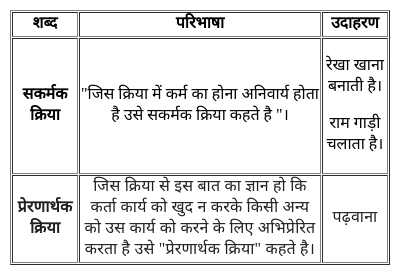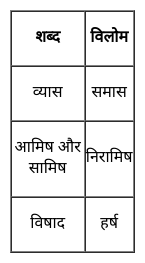NVS TGT Science Mock Test - 3 - NVS TGT/PGT MCQ
30 Questions MCQ Test - NVS TGT Science Mock Test - 3
Which company was awarded the 2024 Google Cloud Sales Partner of the Year for India?
As per the revised guidelines by RBI, what is the maximum risk for custodian banks issuing irrevocable payment commitments (IPCs)?
Directions to Solve
In each of the following questions find out the alternative which will replace the question mark.
Question -
In this pyramid number if: 11 22 31 : 12 21 32 :: 9 12 21 : ?
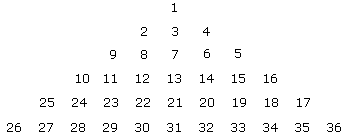
Direction: Read the given instructions carefully and answer the questions given beside.
Six people have midterm exam on different days of the same week, starting from Monday to Saturday. Who has exam immediately after B?
I. W has exam before B. N has exam before R. No one has exam after S. M has exam after Thursday. Three people has exam between S and R.
II. N has exam immediately after M. Two people have exam before R, who has exam immediately after S. B has exam after R but not on Saturday.
______ are very effective because a mode switch is not required to switch from one thread to another.
Which of the following gets displayed when an image is selected?
Which of the following is crucial time while accessing data on the disk?
The basic cause of a teacher`s failure in maintaining discipline is the lack of
In the teaching-learning process, a teacher who inculcates the principles of naturalism in her teaching ability will not utilise which of the following methods?
Which of the following statement regarding the discovery approach of teaching science is correct?
(I) Some cues are presented before students in the form of learning material
(II) The students using inductive way to think to disclose the expected rule or concept.
(III) The learning process is completely controlled and guided by the students.
A piece of paper that appears blue in sunlight is illuminated solely by a red light that is passed through a green filter. What colour does the paper appear under this illumination ?
A ray of light goes from a medium of refractive index μ1 to a medium of refractive index μ2. Theangle of incidence is i and the angle of refraction is r. Then, sin i/sin r is equal to
A man leaves his house at 7:30 a.m. for a morning walk, and returns back at 8:15 a.m. after covering 3 km. Is displacement in this time is:
Calculate the work done in moving a body of mass 50 Kg through a height of 5 m.(g = 10m/s2)
Which of the following is not a merit of Mendeleev's periodic table?
In addition to sculpting and art, where else is Plaster of Paris commonly used?
Arrange the following substances in increasing order of attraction between the particles: water, sugar, oxygen.
Which of the following is undergoing the substitution reaction?
Which of the following cannot be used in organic farming?
New plants can be produces without the help of any reproductive organ by:
Fill in the blanks with the correct modal verb.
_________ I have more cheese on my sandwich?



